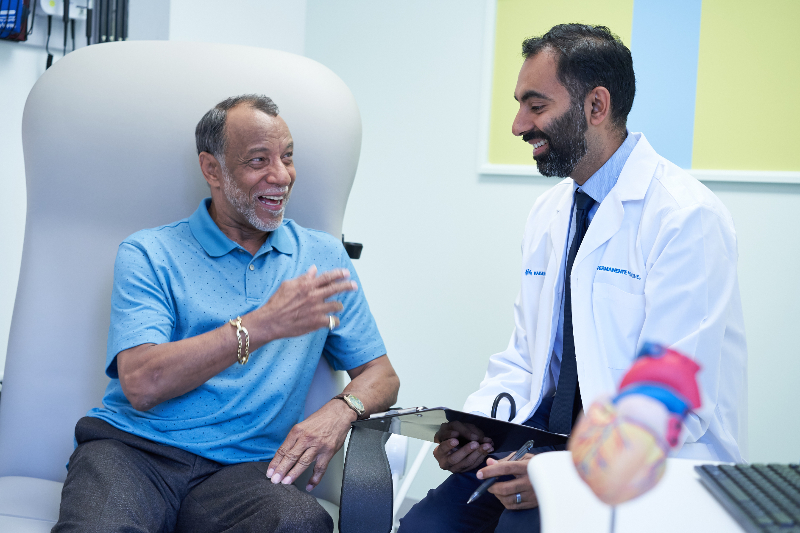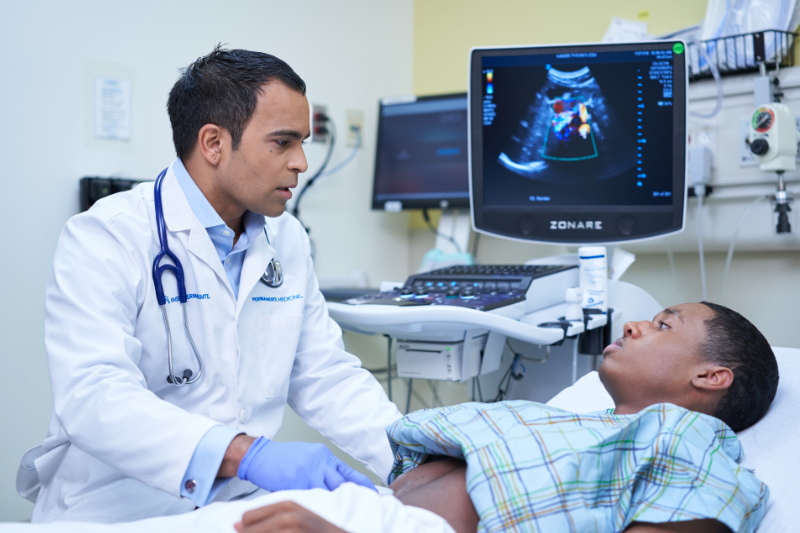The plans are among the nation’s best for quality and performance in 2023 Medicare Star Quality Ratings.

Kaiser Permanente Registry Work Receives National Recognition
Registry Focused on ACL Reconstruction Honored for Improving Patient Outcomes
By Carly Marker
The Permanente Federation
Translating registry findings into evidence-based clinical practice is the goal of a clinical registry.
Furthermore, a registry’s success heavily relies on continued participation from physicians, as well as the administrative team who organizes, validates, and communicates the findings. Kaiser Permanente currently maintains eight such registries: cardiac, vascular, and six in orthopedics (total hip, total knee, anterior cruciate ligament or ACL reconstruction, shoulder, hip fracture, and spine).
By tracking patients and procedures, measuring which factors improve or are detrimental to patient care, and then sharing this information with physicians, registries have identified a direct correlation to improved outcomes over time.
“With most research it is difficult to determine whether the findings from a specific study actually change the way clinicians practice. Registries are unique in that one can identify risk factors for good or poor outcomes and provide that information to clinicians,” says Gregory Maletis, MD, lead physician for the Kaiser Permanente ACL Reconstruction (KPACLR) Registry. “It is then possible to track the positive change in practice patterns that leads to improved patient outcomes.”
The Registry program at Kaiser Permanente was inspired by Sweden’s own health care registries that trace health data spanning many decades. Because of Kaiser Permanente’s integrated care model and ongoing encouragement of physician collaboration, physician leaders believed that Kaiser Permanente was well positioned to model these similar efforts and in 2001 built a registry internally.
The KPACLR Registry is one such example of how Permanente physicians continually improve the treatment of patients with ACL injuries. With over a decade of data collection and analysis, Kaiser Permanente clinicians and patients have contributed to making the KPACLR Registry the largest of its kind in the United States and have successfully demonstrated its direct impact on the quality of outcomes for patients.
The American Academy of Orthopaedic Surgeons recently acknowledged Kaiser Permanente’s ACLR Registry work with the organization’s prestigious Orthopaedic Research and Education Foundation (OREF) Clinical Research Award.
Tadashi Funahashi, MD, assistant regional medical director, Southern California Permanente Medical Group; and chair, Kaiser Permanente Inter-Regional Implant Registries; says: “We founded the Registries with the aspiration of building a reputation for Kaiser Permanente Orthopedic Surgery that brought pride to every orthopedic surgeon. The foundational idea was that collaboration and integration, a hallmark of Permanente Medicine, could create a world-class orthopedic registry. After over a decade of effort and contributions, this recognition is shared by every Permanente orthopedic surgeon, and is a tremendously proud moment for all of us.”
Monitoring All ACL Patients
Every patient across eight Kaiser Permanente regions who undergoes an ACL reconstruction is entered in the Registry, and is monitored using strict privacy controls. In addition to standardized Registry documentation, the ACLR Registry uses the organization’s electronic health record, claims data, and other existing administrative databases to capture patient demographics, comorbidities, anthropometric measures, surgical procedure detail, implant information, and outcomes.
This information is validated and analyzed by the Registry team, who then pass the findings through a variety of feedback mechanisms designed to influence clinical practices of orthopedic surgeons. To aid in behavior change, surgeons receive confidential individualized reports with benchmarking metrics they can use to compare themselves to that of the medical center, region, and organization. In addition, quality reports, annual registry reports, comparative effectiveness studies, risk calculators, and many other resources are also made available.
In disseminating feedback to physicians, the KPACLR Registry team has in multiple instances demonstrated behavior change that has led to improved quality of care and outcomes.
For example, analysis of Registry data on graft choice for ACL reconstruction demonstrated that allograft use was associated with a three times higher risk of revision compared to the use of bone-patellar tendon-bone (BPTB) autografts. (Allografts are tissue grafts from a donor or cadaver, while autografts are tissues harvested from the patient.)
Physician involvement, conceptualization, and ownership have all been key to getting our physicians to trust and act on the data.”
– Liz Paxton, director, Kaiser Permanente National Implant Registries
The analysis also indicated that patients 21 years and younger were at an elevated risk of revision if allograft tissue was employed. This information was spread to surgeons and ultimately led to a decrease in both general allograft use (45 percent reduction in 2010; 33 percent in 2015) and in allograft use for high-risk patients (28 percent in 2009; 9 percent in 2015).
The benefits of this work are not limited to Kaiser Permanente patients. The potential to improve outcomes for patients receiving care elsewhere exists in the tools developed and shared externally. For example, the KPACLR Registry team published a risk calculator accessible to anyone that helps predict which graft will have the best survival rate. This allows any ACLR patient to benefit from over a decade of longitudinal data cultivated by Kaiser Permanente’s Registry team.
When discussing what other organizations can learn from Kaiser Permanente’s Registry experience, Liz Paxton, director of the Kaiser Permanente National Implant Registries, highlights physician engagement as a critical component to the success of any registry.
“Physician involvement, conceptualization, and ownership have all been key to getting our physicians to trust and act on the data,” she says. “With the support of our electronic health record, we have been able to integrate additional documentation needs into the current work flow and thus reduce additional burdens on staff. Even though every contribution is relatively small or brief in nature, the cumulative impact has allowed us to create the infrastructure that has resulted in meaningful research and insights.”
Click here to learn more about Kaiser Permanente National Implant Registries.


